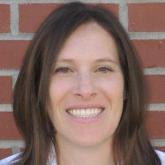Article
Outpatient Parenteral Antimicrobial Therapy in Vulnerable Populations—People Who Inject Drugs and the Homeless
- Author:
- Alison Beieler, PA-C, MPAS
- Amalia Magaret, PhD
- Yuan Zhou, MD
- Anneliese Schleyer, MD
- Anna Wald, MD, MPH
- Shireesha Dhanireddy, MD
1Harborview Medical Center, Seattle, Washington; 2Vaccine and Infectious Diseases Division, Fred...
News

Outpatient parenteral antimicrobial therapy for homeless patients saves lives, cuts costs
- Author:
- Shireesha Dhanireddy, MD
- Alison Beieler, PA-C
Publish date: July 28, 2016
Medical respite outpatient parenteral antimicrobial therapy can decrease length of stay in patients who would otherwise require long...
Article
Successful implementation of outpatient parenteral antimicrobial therapy at a medical respite facility for homeless patients
- Author:
- Alison M. Beieler, PA‐C, MPAS
- Timothy H. Dellit, MD
- Jeannie D. Chan, PharmD, MPH
- Shireesha Dhanireddy, MD
- Leslie K. Enzian, MD
- Tamera J. Stone, RN
- Edward Dwyer‐O'Connor, RN
- John B. Lynch, MD, MPH
